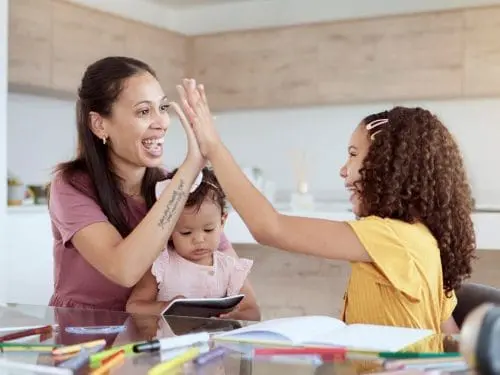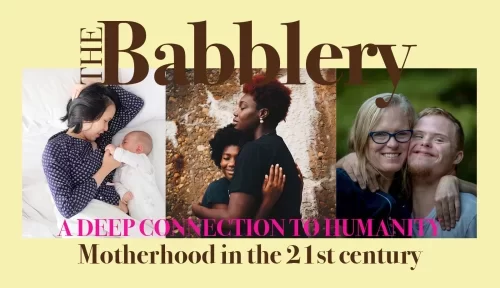Seven Gen Z Leaders Working to Reduce the Harms Caused by the Phone-Based Childhood
Intro from Zach Rausch and Jon Haidt:
The most common argument among the critics of our work is that we are fomenting a groundless moral panic that is no different from earlier panics—from radio and television to comic books and violent video games. It’s a reasonable starting hypothesis, but you can’t cling to it as evidence mounts that this time is really different. Here are two big differences.
Traditional moral panics were largely propagated by the media, which reported sensational stories that often had no basis in reality. The percentage of people who knew anyone who had been murdered because some kids read violent comic books or played violent video games was quite close to zero, and was probably zero. The alleged victims were largely distant and anecdotal.
But this time, most people who spend time with young people—particularly parents and educators—have witnessed firsthand the negative impacts of social media. Most teens know someone (if not themselves) whose despair is related to something happening on social media. Numerous experiments show that these platforms can cause harm to young people and that many young people would prefer to live without them if they could. This is not a groundless moral panic stoked by the media: this is real concern over a tidal wave of suffering that has washed over schools and many families since the early 2010s. We can reasonably disagree about the scale of harm caused by these platforms, but to argue that the concerns are baseless (or too minimal to matter) is no longer tenable.
A second major difference is that, in traditional moral panics, the ‘harmed group’ of kids (e.g., comic book readers) do not generally join in on the calls for reform in large numbers. When comic books swept through the U.S. during the mid-20th century, young people did not form their own organizations to fight back against the companies that developed them. Most young people did not claim that comics were harming their mental health and relationships. They did not form organizations to force companies to re-design their comic books because they were so addictive that they struggled to put them away to do other things they enjoyed in life. Many adults were concerned and thought that comic books were warping their development. But hardly any young people agreed with them.
This time around, with rising concern about the phone-based childhood, the response could not be more different. Numerous youth-led organizations have spontaneously emerged in response to the harms that young people have experienced due to the design and nature of social media platforms. Today, members of Gen Z are teaming up with concerned adults to push back against companies so that they design their products in a way that will no longer harm them. We have looked for young people who think the phone-based childhood has been good for their generation and have found hardly any. The skeptics seem to believe that social media and the phone-based childhood are not particularly harmful; any appearance of harm is just correlation, not causation. But few members of Gen Z seem to agree with them.
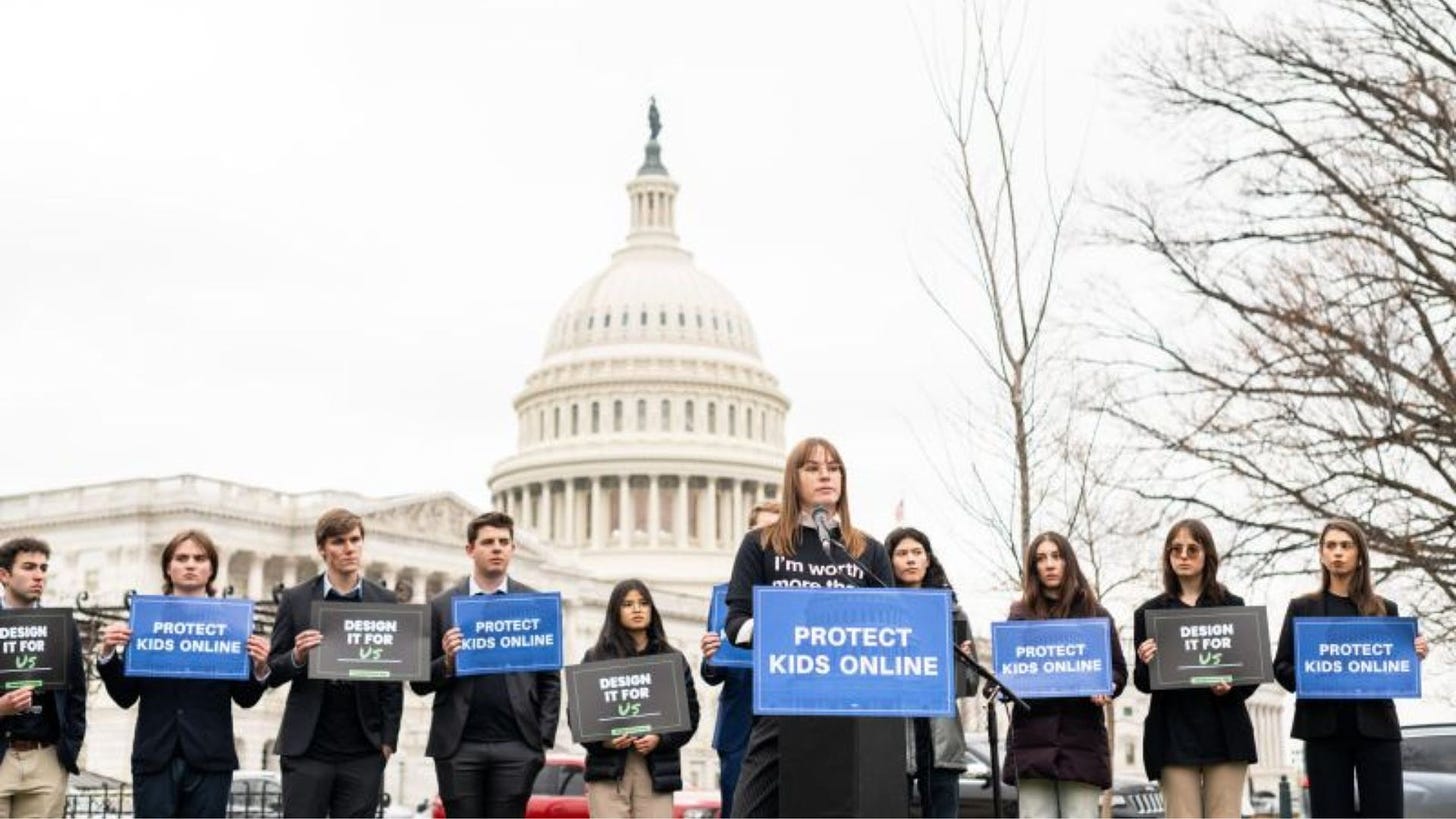
In this post, you will hear from seven of our aligned Gen Z leaders (six from the U.S. and one from the UK) who are organizing, writing, and protesting against the harms caused by the phone-based childhood. All of them have personally experienced the harms of an online childhood and are calling on all of us to help improve the online world for the next generation—because the social media companies will not do it themselves. These individuals and organizations are doing essential work, and we hope you will check out their websites and support them.1
The seven we feature below include:
- Trisha Prabhu, Founder of ReThink
- Sam Hiner and Ava Smithing, Young People’s Alliance
- Larissa May, Founder of #HalfTheStory
- Freya India, Writer at GIRLS, Quillette, and the After Babel Substack
- Maddie Freeman, Founder of NoSo November
- Ben Spaloss, Live and Help Live
Here are their stories:
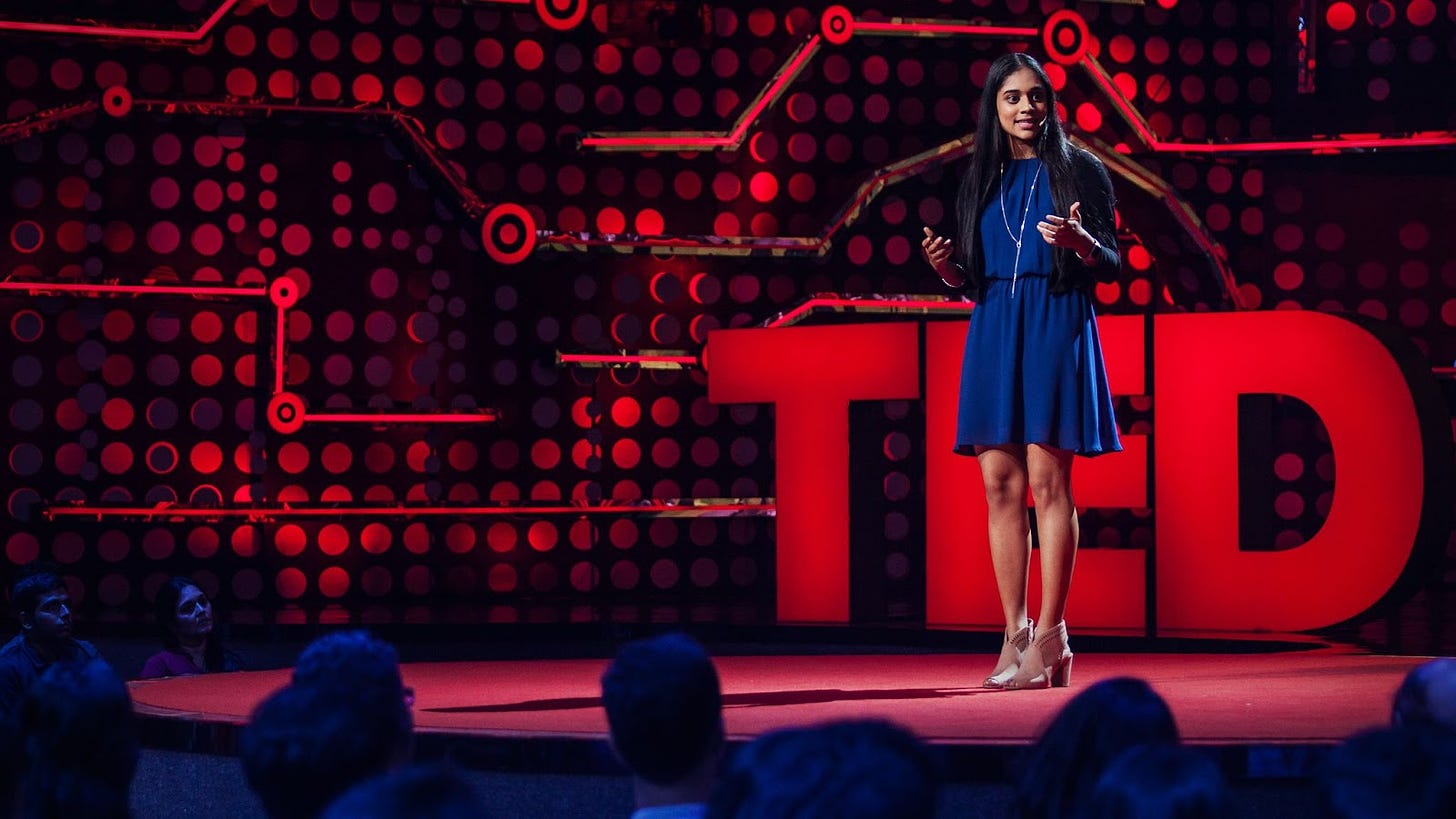
Where are you from? Suburbs of Chicago
Tell us your story and why you founded ReThink.
My journey with ReThink began when I was a pre-teen growing up in the suburbs of Chicago. Like so many young people today, I both witnessed and experienced one of the internet’s worst harms: cyberbullying. For a while, I hid it and dealt with it – or at least, that’s what I told myself. Like so many victims, I just wanted to forget about it, to pretend it had never happened to me. But when I was 13, I read the story of another young woman who had been cyberbullied for over a year-and-a-half, receiving some of the worst messages I’d ever seen: “I hope you drink bleach and die.” “You are so ugly.” “The world would be a better place without you.” Amidst the relentless abuse, she died by suicide. For me, reading that story was a wake-up call, a realization that cyberbullying was, in many ways, a silent “pandemic” affecting so many youth, and often with permanent consequences. This pandemic of hate was only exacerbated by the fact that existing anti-hate solutions were ineffective and reactive. Frustrated by the lack of solutions and youth leadership in the space, I decided to be an Upstander, not a bystander.
What are you working on now?
Today, I lead ReThink, an anti-cyberbullying initiative that is quite literally redesigning the way that we interact with each other online. Working across all apps, from email to social media, the patented ReThink technology detects offensive content before it’s sent and gives users a chance to rethink sending it (“Are you sure you want to say that?”). Research acclaimed by Google and The White House finds that ReThink effectively stops online hate at the source, before the damage is done. Crucially, it also teaches youth critical decision-making skills that they need (both on and off of the internet). In collaboration with schools and educational organizations, ReThink’s technology, educational materials (check out one of my favorite resources, Ask Trish, here!), and anti-cyberbullying advocacy (watch my TED talk here) have been shared with youth worldwide. We’re cultivating a new generation of responsible digital citizens, one student at a time.
What is your primary message to Gen Z and future generations?
My primary message to Gen Z and future generations is to know how powerful your voices and ideas are in realizing the internet we all deserve. Today’s digital world is broken, and no one knows better than us. That’s why it’s so critical that we draw on our lived experience, tech-savvy, and digital know-how to collaborate with “the adults” and problem-solve, advocate, and legislate our way toward a better digital ecosystem. Together, we can make it happen.
What is your primary message to parents, educators, and/or adults?
To parents and educators: First, talk to the youth in your lives about their digital experiences. Doing so is not only a window into their digital world, but it’s also a way to convey that you’re a resource they can turn to should they ever experience digital harm. For parents, it’s also a great way to make a case for not giving your child a phone or access to social media (or at least, not straight away).
To the adults: Know how powerful your voices and platforms are in enabling and legitimating the work of youth activists. By giving young people a real seat at the table, funding our responsible tech efforts, and inviting us into the conversation as you spearhead legislative efforts to build a better digital world, you give us the credibility and access we need to make our mark. Include us, support us, and collaborate with us. We’re eager to work with you!
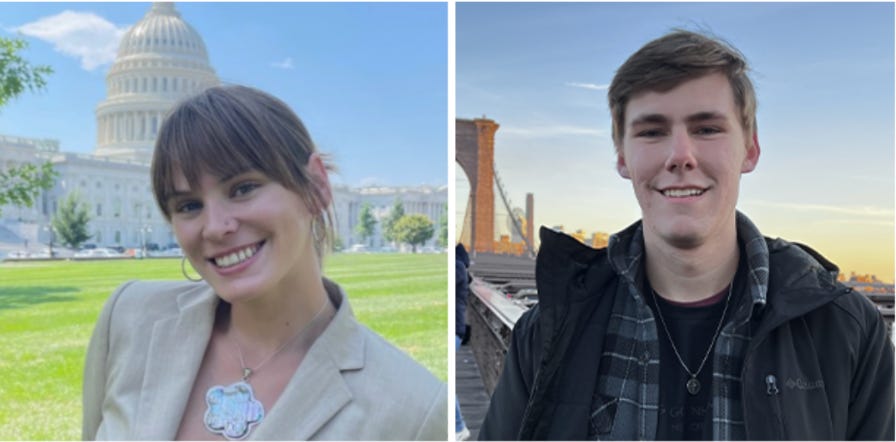
Where did you grow up? Ava- Nashville, TN. Sam- North Carolina
Tell us your story and why you founded YPA
Sam: I still remember when I got Instagram. At the end of fifth grade, my classmates and I downloaded this new app as a novelty. By the time I hit sixth grade, I went from spending all my time outside with friends to being on a screen nearly constantly. While social media opened up new worlds of possibility for me, it also became an inescapable trap. I could more quickly learn about new things and people than ever before, but I also found that I was spending less time with my friends and more time online.
As Instagram’s algorithm improved over the years, the app became harder and harder to stop using. I would go online for five minutes and then break out of a daze of scrolling two hours later. I became constantly frustrated with myself and my lack of willpower.
I eventually realized that I was not alone and that social media companies had designed their platforms to be as addictive as possible to sell more ads. My only solution was to isolate myself from my generation’s public square by deleting the apps whenever my scrolling became unbearable.
While my experience was harmful, I soon learned that many of my peers had far worse experiences. I was shocked by the number of times I heard the same story from my peers:
They saw a post about dieting, and hovered over it for a second longer than a normal post. Their feed quickly showed them more extreme weight loss types and more pictures of photoshopped models, making them feel worse about their body and distorting their worldview. This eventually caused or exacerbated an eating disorder that still affects them today.
Many peers also share similar experiences about being indoctrinated into extremist echo chambers in the same way. Worst of all, these experiences typically happen at 12-14 years old, before they are fully aware of the harms of these types of content.
I’ve seen firsthand how social media has changed the culture of my generation for the worse, addicting kids to devices that make them hate themselves and others and replacing in-person interaction so that they become lonely, anxious, and depressed.
Ava: As a teenage girl exposed to content that convinced me I was not thin enough, my story is one of making sure no other young person has to go through that. I spent my entire teenage years with an eating disorder, progressively worsened as targeted advertising, sponsored influencers and algorithmically recommended content became more and more prevalent on social media platforms. It was not until I was 20 that I realized I was worth more than being preyed on by corporations for my willingness to spend money to mask insecurity. While I have always been someone who rejected modernity and questioned why we needed to innovate technology at such a fast rate, it wasn’t until Frances Haugen blew the whistle on Meta that I realized my inkling social media was contributing greatly to the poor health of my peers and I, was correct.
Since this realization I have dedicated all of my time to advancing the responsible tech movement. I changed my major to concentrate on the history and philosophy of technology, alongside business, and I tagged on a public policy minor. I began going to webinars and roundtable discussions, hosted by all tech is human (check them out). I met Sam at one of the round table discussions right before I graduated from Stevens Institute of Technology and soon after began working with YPA in April 2023. My first experience with YPA was assisting them with lobbying efforts and speaking at a press conference for a North Carolina bill they had drafted and introduced to prevent algorithms from using user data to target them with content and ads. I had never lobbied before, or spoken in a public setting about my experiences, but sharing my story with lawmakers was the best decision I have ever made.
After graduating I moved to DC to work full time on federal legislation to make social media safer and grow YPA’s national presence. In the past year in DC, I have had the opportunity to go toe to toe with industry lobbyists and professionals in panel conversations, testify in front of the Innovation, Data and Commerce subcommittee on ‘Legislative Solutions To Protect Kids Online And Ensure Americans’ Data Privacy Rights’ and look Zuckerberg in the eye while we was faced with the reality of his actions during the January 31st Senate hearing. The purpose I have found through this advocacy and organizing work is a gift I wish to give to each of my contemporaries. I look forward to seeing what all Genz can accomplish, especially after we create social media platforms conducive to collective action. It is difficult to speak so candidly about harms you have suffered, and keep pushing forward in the face of people who tell you no and evidently care more about profit than about you, but the passion we as a generation have for each other and justice will undoubtedly prevail.
What you are doing now?
YPA is advocating for the Kids Online Safety Act, which would regulate social media so that it can truly bring people together rather than addicting and isolating them. We also organize students to become politically engaged at 11 colleges throughout North Carolina, are writing legislation to regulate AI chatbots that could worsen the loneliness crisis, and are creating a bipartisan youth power platform.
What is your primary message to Gen Z and future generations?
We live in a time of tremendous uncertainty. New technologies leave us wondering if there will even be jobs for us by the time we leave school. However, this is also a time of amazing opportunity for young people. We are better equipped to tackle the issues of our time than older generations because we’ve been using technology for our entire lives and intuitively understand its benefits and harms. It’s time for us to get politically engaged, elect younger leaders, and create a brighter future.
What is the most important thing that governments and tech companies can do now?
Governments need to pass forward-looking legislation to regulate social media and AI. We must crack down on companies using mass manipulation for profit.
Tech companies should build new technology with the autonomy and fulfillment of their users as the top priority. The last generation of social media entrepreneurs has intentionally chosen to harm millions of users’ mental health for profit, and we’ve lost trust in their ability to do the right thing. We are encouraged by our generation, which is far more focused on doing good and social entrepreneurship than previous generations.
Learn more about Young People’s Alliance
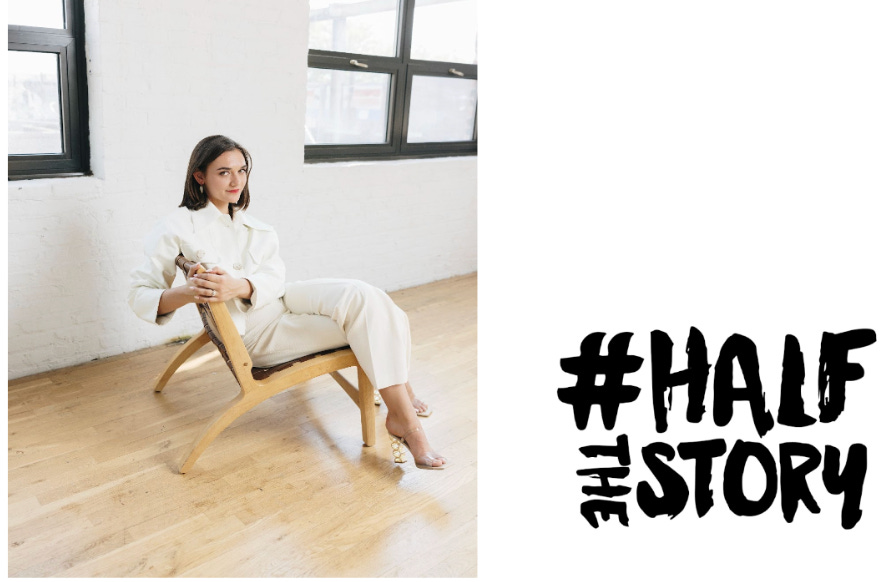
Where did you grow up? Chicago!
Tell us your story and why you founded #HalfTheStory.
I am here because I almost ended my life because of social media in my college dorm room and survived. I believe that stories can change the world, and I’ve devoted the last decade of my life to building the solution I wish I had had then.
In 2020 (four years into #HalfTheStory), my career, nonprofit work, and mental health were all hanging by a thread. My partner Christian and I made the decision to leave New York and relocate to California. We ended up in the attic of a barn on a ranch in Sonoma, CA. Despite the less-than-ideal living conditions, we saw it as a chance for a fresh start.
Every bone in my body wanted to take a bet on #HalfTheStory after spending my early career building the dreams of other founders. I took the leap to leave my full-time job building Kin Euphorics, Bella Hadid’s non-alcoholic beverage brand, to pursue #HalfTheStory full-time. I was uncertain how to financially navigate this decision, but I trusted my intuition. I spent every waking moment prospecting donors, pitching for speaking engagements, and scouring LinkedIn to find my dream team. After five years of bootstrapping the organization with speaking engagement fees, I received a $150,000 grant from the founders of Pinterest.
Through a fortuitous introduction to one of our first teen’s former educators and a lucky LinkedIn search to find Rachel Hanebutt, our now head of insights and one of the only folks in the world pursuing a digital wellness doctorate degree, I convinced the first two employees to join the wild journey in a part-time capacity.
I built and piloted the first youth co-designed intervention program, SocialMediaU (SMU), with limited resources and initial design struggles. But, after positive feedback about the SMU program at a high school, I persevered.
Two years later, we have secured $1 million in philanthropic funding, created an ed-tech platform, gained global recognition, and collaborated with leading neuroscience labs studying social media’s impact. These years have brought me immense personal meaning and alignment with my purpose. Now, #HalfTheStory is on a mission to serve 1 million students in the next four years.
What is your primary message to Gen Z and future generations?
TEEN WORK MAKES THE DREAM WORK. We believe digital well-being is a fundamental human right and that all humans deserve a world where they aren’t consumed by unregulated algorithms, addictive features, and increasingly manipulative advertising practices on screens and platforms. Not all screen time is created equal – through active tech consumption, we can drive positive change with intentions and better emotional outcomes.
Teens have the power to have agency over their digital world and we need to ensure there is a young voice in every room where a decision is being made about them.
What is your primary message to parents, educators, and/or adults?
Give your kids the tools they need to thrive in the digital world, and model it yourself. #HalfTheStory’s core approach is developing and implementing engaging, relevant, school-based digital well being curricula in the form of SocialMediaU, the first-of-its-kind digital well being program. Day-to-day means that our team is utilizing a teen-engaged research approach to implement our program per the latest research to empower digital wellness from the inside out. Bring our program to your school or after-school program here.
Learn more about #HalfTheStory
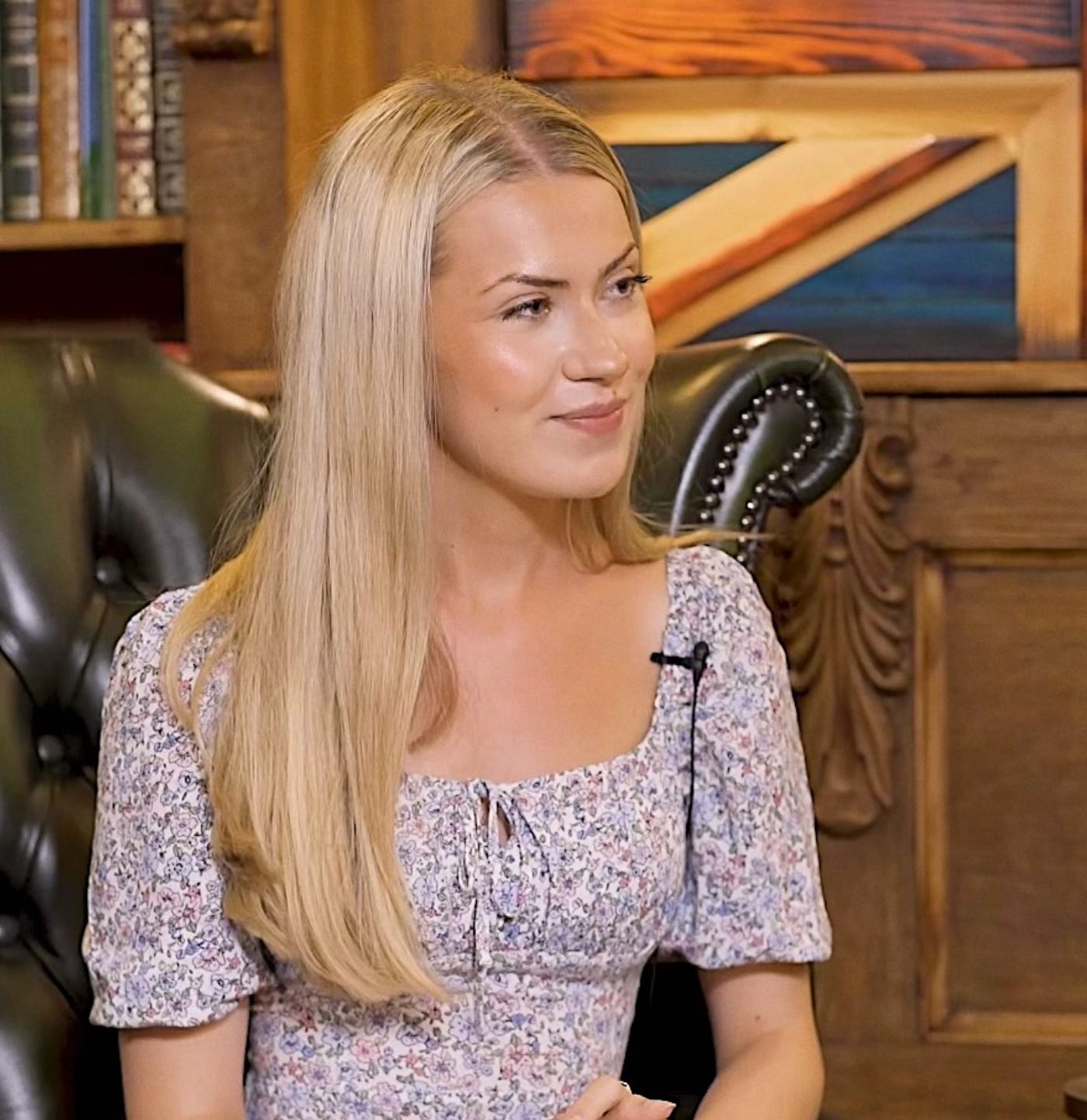
Where did you grow up? In a small town in Essex, England.
Tell us your story and why you started GIRLS
My carefree, phone-free childhood ended abruptly in my pre-teens when social media changed everything. I was a sensitive and introverted child, and I know what it’s like to not feel cut out for a world suddenly obsessed with performance and online validation. I feel for the children who have never known anything else. I suppose I want to talk about the pain of losing your teenage years to a phone-based world and feeling nostalgic for a time you never knew.
After university, I started working in a cafe and pitching to various publications about social media, modern culture, and the problems I saw facing my generation, Gen Z. There was so much valuable research and data out there — but less about how it feels to come of age in a phone-based world. So I started my own publication, GIRLS, where I try to articulate what it’s like to grow up as a girl or young woman today. What began as a hobby of mine has now evolved into a global, engaged community of concerned parents, young women wanting to change course, and many others who simply feel lost in this phone-based world we are living in.
What are you working on now?
I’m a columnist at Quillette, the author of GIRLS, and working on a book about girlhood in the modern world. I now write and talk about all kinds of issues affecting girls and young women, from the pressure to document everything on social media to the rise of risk aversion around dating. I was lucky enough to connect with Jonathan Haidt in 2021, who later quoted me in his chapter on girls in The Anxious Generation. I’m very grateful to have now joined his new movement to help Free the Anxious Generation.
What is your primary message to Gen Z and future generations?
My main message to Gen Z is that social media companies and our devices distract us from what is meaningful in life. Meaning doesn’t come from social media metrics or making yourself marketable online; you derive it from who you are, how you treat people, and by trying your best to live an honest and virtuous life. That’s real empowerment. We are a generation that talks endlessly about “empowerment”, allowing algorithms to dictate our interests and personalities and basing our self-worth on how we perform online. There’s so much more to life and ourselves than that – and we can free ourselves from these pressures.
What is your primary message to parents, educators, and/or adults?
To parents, I would say that the effects of social media on your children are often subtle, beyond obvious dangers like online predators or cyberbullying. Algorithms are transporting children to dark places, effectively placing them on conveyor belts that expose them to increasingly extreme ideas, identities, and behaviors.
To older generations more generally, my message is that while the modern world may be more convenient and materially comfortable, it is psychologically demanding and drastically different from the world they grew up in. The only way out of this crisis is to start with more compassion for Gen Z and Alpha.
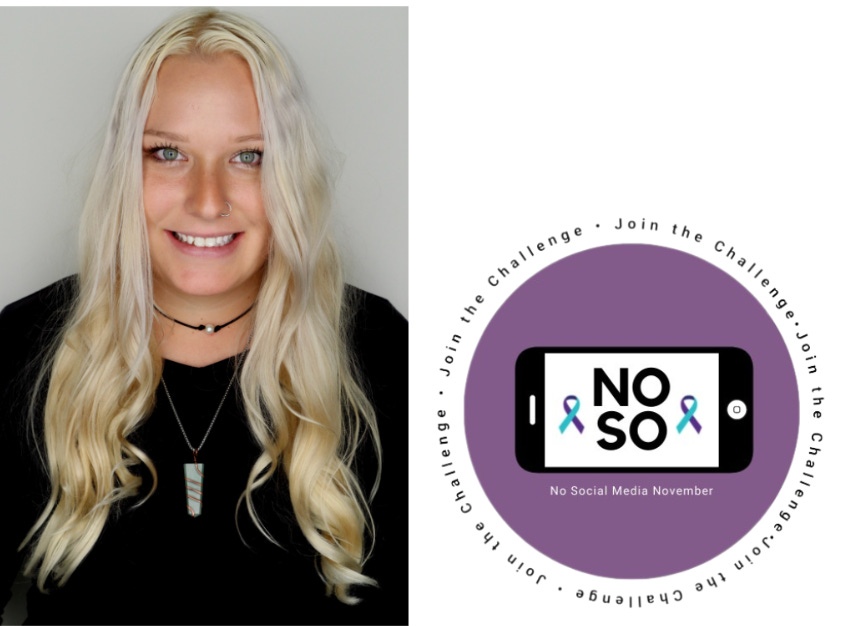
Where did you grow up? Littleton, Colorado
Tell us your story and why you founded NoSo November.
In early middle school, I began experiencing significant mental health issues like depression and suicidal ideation, and around this time, I had also started using early versions of social media—which I became very addicted to. Then, my teen years were marked with immense suicide loss; I lost 10 friends and peers in what seemed like a repetitive nightmare. At 19, during the pandemic, I decided to channel my grief into doing suicide prevention work for my community, kickstarted by a successful petition I made. While working with my old school district to develop new mental health resources to implement, I created NoSo November as a novel idea after being inspired and touched by The Social Dilemma. I felt that all the existing issues I had witnessed in myself and my community were worsened and deeply intensified by social media, though not the sole cause. I then signed up for the Center for Humane Technologies newsletter, applied to a grant competition they were hosting, and won—thus launching NoSo to become a global movement that works with schools nationwide. What was once a passion project became a full-scale nonprofit, changing young people’s relationship with social media and helping them develop positive mental health practices.
What are you working on now?
NoSo is a global movement with a challenge to participate in our life-changing one-month detox called “No Social Media November.” Participation requires deleting or modifying one’s usage by taking a monthly break from social media. We promote year-round well-being outside of hosting our yearly November detox challenge by hosting numerous in-person mindfulness events for student/teen groups to mindfully disconnect, move out of their comfort zone, and discover life-long passions and healthy coping mechanisms. In addition, we partner with school districts and colleges to host community detoxes and provide resources and support in the classroom. We also regularly engage in conversations, panels, and guest speaking opportunities across the US to spread awareness about addictive design and its consequences, and our effective solution.
What is your primary message to Gen Z and future generations?
You are more powerful than you think—sharing your story and getting involved with youth-led initiatives can change the future of social media. Our attention is the product being bought and sold. We can take steps to make digital well-being a collective priority.
What is your primary message to parents, educators, and/or adults?
Elevate youth voices: Today’s youth are uniquely positioned to be at the forefront of education and awareness-building regarding digital wellness. Collaboration is key to shifting the narrative and creating fruitful, impactful change. Be empathetic, always.
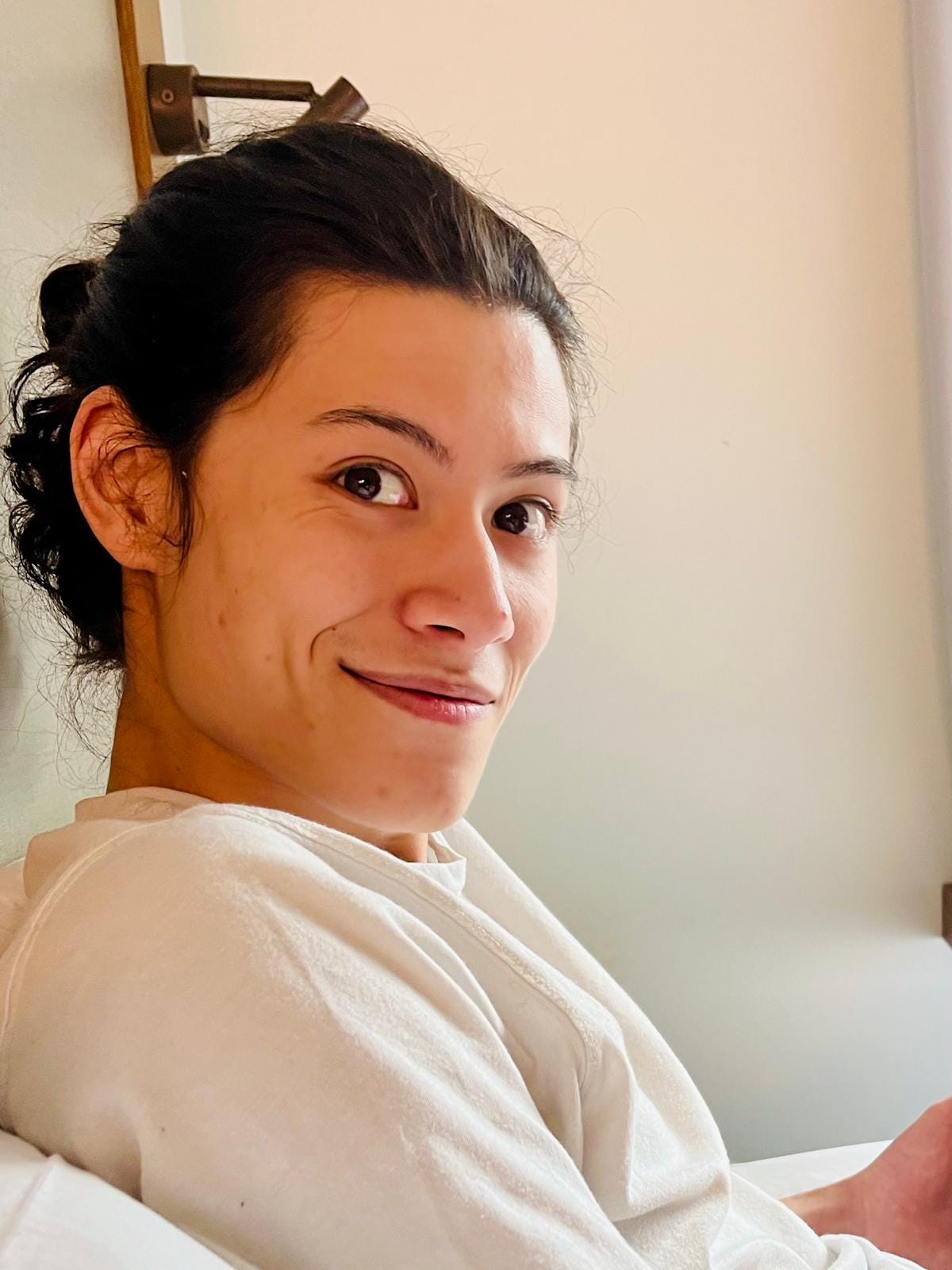
Where did you grow up? Virginia, then North Carolina
Personal Story (e.g., why you care)
Where I went to high school, “reading a book” was a joke. The laugh-out-loud kind of funny. The reality was SparkNotes, CliffNotes, your friend’s notes, or whatever you found online to get the assignment done. The real school we went to every day was the Internet. The social media platforms had a perfect attendance rate, but what they were giving to the kids, nobody knew at the time.
I had no idea what I was doing when I picked up my first book. It was an act of childish imitation of a person I knew who read a lot. He was a personal hero and mentor of mine. This man was the most brilliantly intellectual and abundantly kind person I’ve ever met. On the outside, he was an after-school tutor for high school students, but to me, he was almost a second father figure. He was one of the best friends I’ll ever have.
At the time, I was a high school senior, intimidated by the big, scary world. My defenses were to try to act tough and uncaring. This man softened me up and taught me that loving others and aspiring to change the world was a much better philosophy. He was right.
When the schools began to go into lockdown, I found myself in the attic looking for some charging cable, and I found one of my dad’s old books. It had a bright yellow cover, The Power of Habit by Charles Duhigg. I knew my tutor liked to read a lot, and so in imitation of a hero, I read my first volitional book. I raced to finish it before the two-week lockdown ended, but it never did. “The Lockdown” became “The Pandemic” as I began reading my second book. By that point, an imitation became my own habit.
By the end of that year, I had read over 50 books, and a couple hundred the year after. I began to be exposed to educators and intellectuals who have forever changed how I think of the world, people like Steven C Hayes, Neil Postman, Yuval Noah Harari, and many more. Around this time, I also began to look at my phone differently.
When I learned about tyranny, my mind changed about social media. My trail of pages took a detour in dystopian literature for a month or two. Animal Farm, The Handmaid’s Tale, or even 1984 didn’t ruffle me much. It was Huxley’s Brave New World that stirred me. A story I struggled to find the ending to, even when the protagonist dies at the end, and the book is closed on a shelf.
Brave New World describes a unique dystopia. In it, the typical antagonist of the tyrannical government isn’t present. Instead, the protagonist is the antagonist. The people oppress themselves.
It pointed to a world where the books don’t burn, but the libraries are left unchecked. Where information is not deprived from people, but given in incomprehensible abundance. Where the culture is not controlled but instead trivial, comedic, sexual, or roasted. In this world, people are not controlled by inflicting pain, but pleasure. It was a world without pain, poetry, truth, or meaning. I saw pleasure, when Huxley and later Postman, pointed from their graves to my phone with their stories.
But it was when my hero and mentor died during the pandemic that I began to understand the value that pain, poetry, truth, and meaning can have. When I learned that love doesn’t have to die when people do, and that his mission to Live & Help Live could live on in me if I stood for it.
I am here because I want to try to make the world a better place, by helping people live more fulfilled lives. My generation’s world is online, so I thought I’d try to reach people there.
What you are doing now:
I run a TikTok profile with 190k followers, where I post to try and help people get off their phones. I will try to get people interested in books, or post at night to help people to power off and sleep. I will also try to teach different behavioral change skills to help people navigate some of the internal barriers that can make change so hard.
My background is in Contextual Behavioral Sciences (CBS), a wing of behavioral and clinical psychology where products like Acceptance and Commitment Therapy or Functional Analytic Psychotherapy originate. I have had the extreme fortune of working with and receiving limited training from some of the best in this field. Additionally, the bulk of my reading has been in CBS, which I try to apply in my TikTok videos to help facilitate behavior change.
I also work as the communications director for the Young People’s Alliance, a youth advocacy organization that has been focused on getting the Kids Online Safety Act passed, a landmark piece of legislation to protect the mental health of kids and teens on social media.
Lastly, I was a late stage editor for The Anxious Generation by Jonathan Haidt, and I am currently working on a book myself with Dr. Mavis Tsai at the University of Washington on the skills of deeply personal social connection.
What is the most important thing that governments and tech companies can do now?
Congress can pass the Kids Online Safety Act, and tech companies can stop spending 60 million dollars a year in lobbying to prevent it.
Anything else?
I try to read every email I get: benspaloss.team@gmail.com
Learn more about Live & Let Live
Two of our aligned organizations with Gen Z leaders were unable to participate in this post, but we value their work so much that we want to promote them here. Their names are Emma Lembke and Zamaan Qureshi. Emma was a high school senior in 2020 when she founded LOG OFF, which is committed to helping kids, teens, and young people build healthy relationships with social media and online platforms. Emma and Zamaan are co-chairs of Design It For Us, which is a youth-led coalition to advocate for safer online platforms and social media. Both organizations are doing essential work, and we hope you will check out their websites and support them.
Thank you Zach and John for gathering these voices of the youth for us: https://www.afterbabel.com/p/the-youth-rebellion-is-growing

